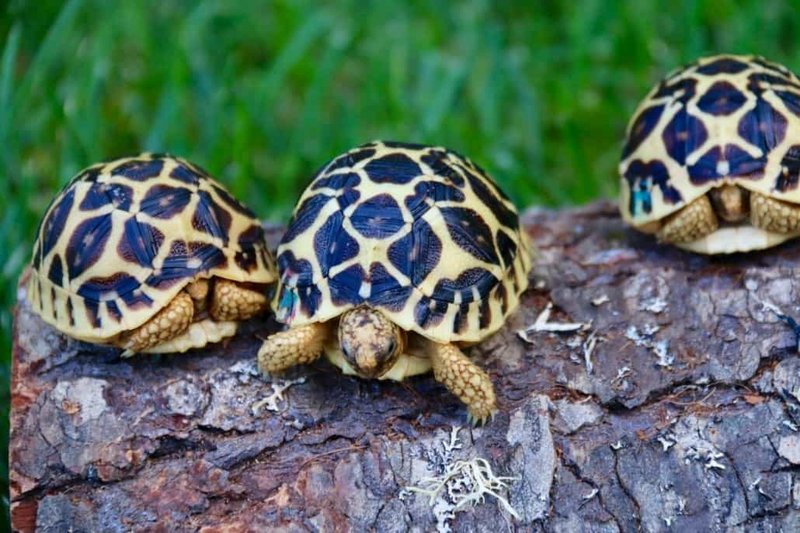
The Indian Star Tortoise is not just another cute reptile; it’s a fascinating creature with unique requirements. These little guys are known for their stunning patterned shells, which serve as their armor and house. They hail from the dry regions of India and Sri Lanka, making them quite adaptable. But, like any pet, they thrive under certain conditions. So, should you lay out a cozy space indoors or create an outdoor paradise? Let’s explore the ins and outs of tortoise living arrangements.
Understanding the Indian Star Tortoise’s Natural Habitat
To start, it’s essential to get a grasp of the Indian Star Tortoise’s natural habitat. These tortoises dwell in dry grasslands and scrub forests. They’re accustomed to warm temperatures and enjoy plenty of sunshine. In the wild, their days are filled with the sun’s warmth, foraging for food, and hiding from predators. This background shapes their needs when we think about indoor versus outdoor living.
When thinking about indoor habitats, you’ll need to recreate a slice of their natural environment. Tortoises require warm temperatures, which usually means setting up a basking spot under a heat lamp, along with a cooler area for them to retreat to when they get too warm. This balance mimics their outdoor experience and keeps them comfortable and happy.
On the flip side, outdoor living can offer a more authentic experience for your tortoise. An outdoor enclosure with safe, warm sun exposure allows them to dig, explore, and display their natural behaviors. They can also munch on grass and weeds, which is part of their diet in the wild. However, outdoor living isn’t without its challenges—like predators, weather conditions, and the need for secure fencing.
Indoor Living Arrangements for Your Indian Star Tortoise
If you’re leaning toward an indoor setup, you’ve got to create a mini paradise for your tortoise. Start with an appropriate enclosure. A large terrarium is a great choice; it should be spacious enough for your tortoise to move around comfortably. Think of it as a cozy apartment that allows some room for exploration!
Here are a few key points to consider when setting up an indoor habitat:
- Temperature Control: Your tortoise needs a basking area of 95°F to 100°F and a cooler side around 70°F to 75°F. You can achieve this with heat lamps and thermometers.
- Humidity Levels: These tortoises thrive in lower humidity, so aim for about 30% to 40% humidity in their habitat. Using a substrate like coconut coir can help maintain these levels.
- Lighting: A UVB light is crucial for their health. It helps them synthesize vitamin D3, which is necessary for calcium absorption and shell health.
Creating an indoor habitat can be a fun project. You’ll need to include some hiding spots—like rocks or caves—and provide a variety of food items. A mix of leafy greens and occasional fruits will keep your tortoise munching happily. Just remember, variety is key!
Outdoor Living Arrangements for Your Indian Star Tortoise
Now, let’s shift our focus to the great outdoors. If you have the space and suitable climate, an outdoor enclosure can be a fantastic option. Picture your tortoise lounging in the sun, nibbling on fresh grass, and enjoying a gentle breeze. Sounds idyllic, right? But, setting up an outdoor environment requires careful planning.
Here are some essentials for creating a safe outdoor space:
- Secure Fencing: Tortoises are curious creatures and can dig! A solid fence buried a bit underground is vital to keep them safe from predators.
- Shade and Shelter: They need areas to retreat from direct sunlight, especially during the hottest part of the day. Create shaded spots with plants or small structures.
- Temperature Monitoring: Just like indoors, you need to monitor the temperature. Ensure there’s a basking spot in the sun that reaches the appropriate warmth.
Outdoor living can provide more natural foraging opportunities. Letting your tortoise munch on dandelions, clover, and grass can add a tasty, nutritional aspect to their diet. Just be sure to keep an eye on what they’re eating; avoid areas that may have been treated with pesticides or chemicals.
Pros and Cons of Indoor Living for Indian Star Tortoises
Let’s take a closer look at the advantages and disadvantages of keeping your Indian Star Tortoise indoors.
Pros:
– More control over temperature and humidity levels.
– Protection from predators and harsh weather conditions.
– Easier supervision of their diet and health.
Cons:
– Limited space for natural behaviors like digging and roaming.
– Potential for boredom if the enclosure isn’t stimulating enough.
– Requires commitment to setting up and maintaining the habitat.
While indoor living can provide a safe environment, it’s essential to keep your tortoise engaged and happy. This might mean spending a bit of extra time with them outside their habitat for some outdoor fun!
Pros and Cons of Outdoor Living for Indian Star Tortoises
Now, let’s balance the scales and examine outdoor living for Indian Star Tortoises.
Pros:
– More space to roam and explore, mimicking their natural habitat.
– Opportunities for natural foraging, which can enhance their diet.
– Access to sunlight, which is crucial for their health.
Cons:
– Exposure to potential predators and extreme weather conditions.
– Requires constant monitoring to ensure safety and health.
– More effort to maintain a secure and comfortable environment.
Choosing outdoor living can lead to a more fulfilling life for your tortoise, but it also brings its own set of challenges.
What to Consider When Choosing Indoors vs. Outdoors
Deciding whether your Indian Star Tortoise should live indoors or outdoors boils down to a few critical factors. Here are some questions to ponder:
– Climate: Does your local weather allow for safe outdoor living year-round? If winters are harsh, you might lean toward keeping your tortoise inside during those months.
– Space: Do you have enough room for a secure outdoor enclosure? If not, an indoor setup might be the best option.
– Time and Effort: Are you ready to maintain and monitor an outdoor habitat regularly? If you prefer a lower-maintenance lifestyle, indoors might suit you better.
No matter which option you choose, the goal is to provide a loving and enriching environment for your tortoise. A happy tortoise means a happy owner!
In the end, whether your Indian Star Tortoise thrives indoors or outdoors really depends on your specific circumstances. Each option comes with its own advantages and considerations. The key is understanding your tortoise’s natural behaviors and needs, then tailoring their environment accordingly.
So, whether you set up a cozy indoor apartment or an expansive outdoor adventure, your tortoise can lead a happy, healthy life. Just be proactive about their care, monitor their health, and provide the proper warmth and nutrition. After all, a little love and attention can go a long way in making your shelled friend feel right at home!

